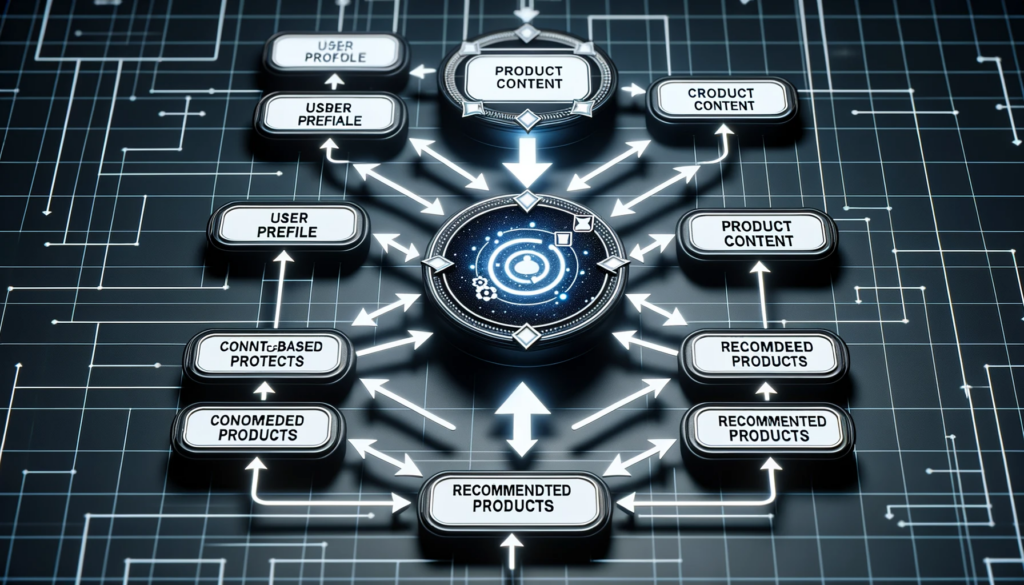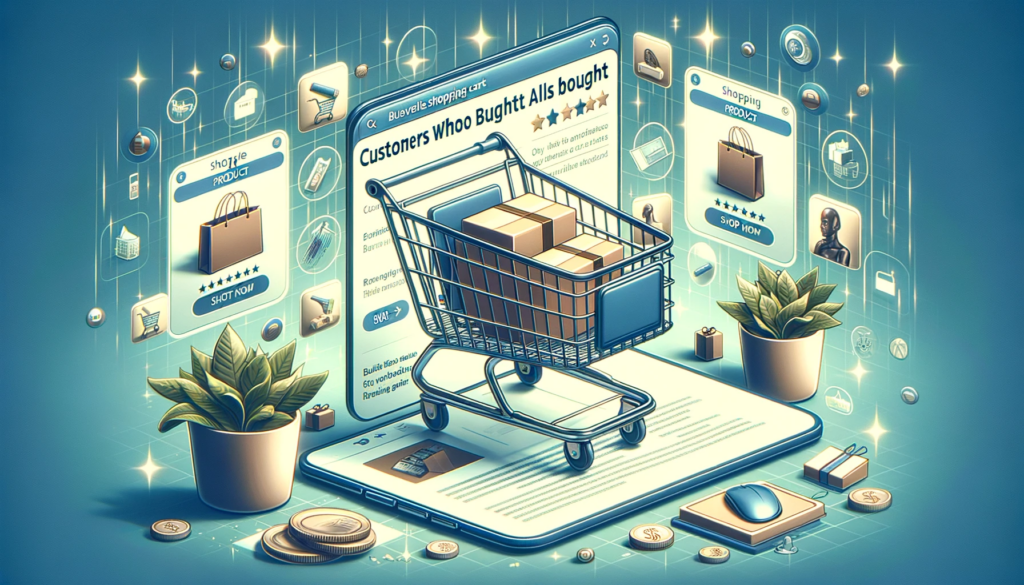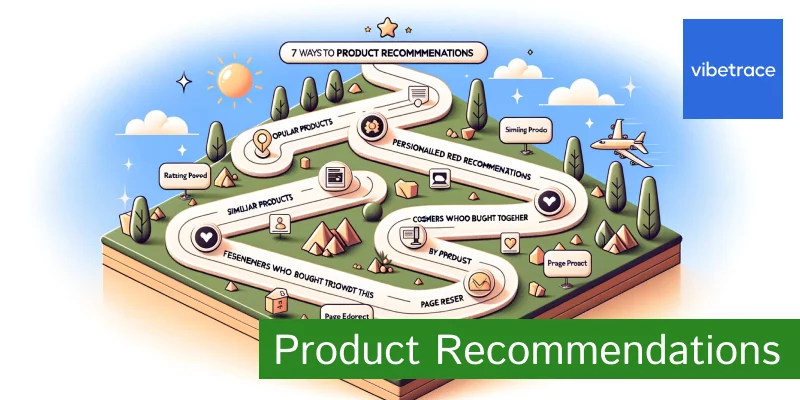Product recommendation engines give your buyer personalised customer experience
Ecommerce businesses don’t work the same way that their in-person counterparts do. In fact, it’s easier to effectively recommend products if you’re running an online store than a physical one.
That’s true for a few reasons, but before we get into those, let’s backtrack a little. What makes recommender systems so great and what is a recommendation system?
We’re going to explore everything to do with product recommendation engines, so by the time you’re done reading this article, you’ll be an expert on them.
Here’s what we will cover:
What is a product recommendation engine?
In short, a product recommendation engine is a program that’s created to suggest different products to customers on your website. These product recommendations can take the form of related products, similar products, and/or things bought by other customers with similar tastes.
That’s a complicated way of saying “product recommendation engines give customers personalised recommendations for further items”.
Let’s look at an example. Whenever you watch a video on YouTube, there’s always a bar on the right-hand side full of other content you might be interested in. That’s YouTube’s recommendation algorithm at work.
Instead of just leaving customers to look for more products (or videos, in the case of the example above) on their own, these programs curate and provide a selection of relevant products.
This prevents choice overload and helps users find more products they’ll like.
Types of product recommendation engine
All product recommendation engines are based on machine learning algorithms that track the behaviour of a website’s users, then learn from that behaviour to provide more and more accurate recommendations.
With that said, not all product recommendation engines are the same.
There are three key types of engines, and they’re divided based on the method they use to generate recommendations.
These three categories are:
- collaborative filtering
- content-based filtering
- hybrid recommendation.
Let’s look at what makes each of these types of engine useful, as well as how they work.
Want to be up to date with Marketing?
Subscribe to our Retail CX newsletter!

Stay connected with what’s really important to optimize your digital revenues.
By clicking the button, you accept our Terms & Conditions. Also you will need to confirm your email address.
Content-based filtering
This is the most straightforward type of product recommendation engine mechanism. Content-based filtering essentially just uses cookies to track users’ behaviour across multiple visits to the same ecommerce website.
Keywords are always used to describe products with this method. That’s so the algorithm can track the way each user interacts with items that use specific keywords.
For example, if a user tends to like products that match the keyword “DIY”, a content-based recommendation engine would give that user lots of recommendations for DIY products.

This type of filtering system is particularly effective when you’ve got access to customer data regarding browsing history and/or purchase history. That data shows your engine what kinds of products your customers tend to search for and spend money on, which makes it easier to recommend new products they’ll also be interested in.
Content-based filtering also benefits massively from using machine learning, since automated algorithms can find links between keywords that help business owners advertise their products.
Collaborative filtering
This filtering method involves analysing user behaviour, then using the results of that analysis to recommend products to similar users. It’s based on the idea that users who show that they have similar preferences in one regard will also have others in common.

In short, collaborative filtering uses the patterns of other customers to recommend products to each specific customer.
As you might imagine, this approach becomes more accurate the better your customer insights are.
Hybrid
A hybrid approach combines the best of both content-based and collaborative filtering. It involves using both other methods separately to generate product recommendations, then combining the resultant lists.
Hybrid engines filter a lot more data than those created for the other two approaches, since they need to understand each user in great depth if they hope to be accurate. That means that the “cold start problem”, which refers to the trouble of having no data on first-time visitors, impacts hybrid users more intensely.
At the same time, hybrid engines also gather more data in less time, so they can move past that problem faster as well.
Benefits of using product recommendation engines
Some of the biggest advantages that come with using product recommendation engines for your ecommerce site include the following:
- Improved customer satisfaction, since you’ll be increasing the amount of personalisation you offer.
- Better average order value on your end as customers will be tempted to buy more items, which means each virtual shopping cart will, on average, be full of more items.
- Higher conversion rates, because your site visitors are more likely to encounter a product they like and spend money on it to become a paying customer.
- A more optimised homepage that’s organised according to your best sellers and links to relevant product pages, which helps make your online store look more attractive to visitors.
Seven ways to use product recommendations
There are many different ways to make the most of product recommendations. We’re going to focus on seven of the best ways to do so.
Popular products
Showing customers your best sellers is a great way to harness the power of recommendations.
A popular product is one that comes with the endorsement of lots of other buyers, which shows customers that it’s desirable among their peers. This means customers don’t have to take the word of retailers alone, they can directly see that other customers like a particular product, and why. Even without checking out the glowing social media reviews your products are sure to have, too.
Rating-based
This approach puts even more of an emphasis on the opinions and preferences of customers, and for good reason. As it turns out, a good review makes customers up to 94% more likely to buy a product.

Showing off your products with the best ratings gives site visitors a chance to see that your company is good at making its customers happy. That helps you build credibility, as well as giving you a hand when it comes to connecting with customers.
Personalised recommendations
By providing highly personalised recommendations, you can show your customers that you value them as individuals and that you’re prepared to cater to their individual needs.
This is helpful not just in boosting your customer satisfaction scores, but also in increasing the amount of cross-selling you can do. That’s because cross-selling based on past purchases is a highly personalised means of providing recommendations.
Similar products
Sometimes, customers have a highly specific idea of the product they want to buy.
That’s why it’s important that your recommendation engine can suggest multiple versions of the same types of product, so your customers are more likely to encounter the precise one they want.
Essentially, this way of using product recommendation is all about optimisation. Your engine needs to know exactly which products are similar to one another, and in what ways, to optimise the chances of providing great recommendations to customers.
Frequently bought together
Don’t we all wish our customers would arrive on our site, put a product in their cart, and then keep on adding more and more products to that cart?
That can be the case, if you optimise the items you show customers using your website’s “frequently bought together” functionality.

By offering a section that shows customers products others often buy with their chosen item(s), you can entice them into buying more items than they thought they needed. That’s a great way to enhance their online experience, while increasing your average order value.
Customers who bought/viewed this
This one goes back to the earlier point of customers preferring to buy things that other customers can vouch for.
By showing your site visitors the items that other customers liked based on those visitors’ preferred items, you can tap into the power of good reviews.

Which, in other words, means you get to impress that 79% of shoppers, and show them similar items they’re likely to enjoy.
Page redirect
By using page redirects, you can send your customers straight to the right virtual location to buy your products.
If customers are searching for product pages that don’t exist anymore, for example, your recommendation engine can use that data to redirect them to new pages that do exist.
How can we help you recommend great products?
With Digital Assistant, it’s easy to provide real-time guidance to customers so they can find the products they’re looking for, and then some.
The Digital Assistant supports customers through each step of the customer journey. It helps business owners understand their clients’ needs and preferences, provides answers to customers’ questions using automation, and assists customers in their purchase decisions through recommendations.
In a word, it creates a seamless user experience for visitors to your website.
You can further enhance your customer experience through email remarketing. For example, by using product cross-sell remarketing emails, you can promote products related to items that a customer has already purchased.
Conclusion
A product recommendation engine is a great way to improve your customers’ experience on your ecommerce website and boost your average order value, all at once.
These types of engines are designed specifically to make it easier for your online store to sell more items per purchase, and they do this by learning about the needs and preferences of customers.
In other words, you get to show your customers you understand them by using a recommendation engine. You also get to increase the number of items you sell, anytime someone makes a purchase in your store.
Frequently asked questions (FAQs)
What is a product recommendation engine?
Put simply, a product recommendation engine is an algorithm used by ecommerce sites to suggest additional products to customers based on the things those customers are already interested in. Just like those TV program recommendations on Netflix.
It’s a popular tool for marketers that want to give an extra promotion to the brand’s content after a lead has already shown that they’re ready to make the switch to being a paying customer.
Products recommended by the engine are often displayed just before, during, or immediately after customers have completed the checkout process.
What are the types of product recommendation engine?
There are three main types of product recommendation engine: Content-based, collaborative, and hybrid.
Content-based engines analyse patterns in customer behaviour to recommend new products. They track cookies and monitor user interaction with products that contain particular keywords to build a profile of those users. That profile is then used to recommend new items.
Collaborative engines use the preferences of other customers to generate recommendations for new ones. They rely on the assumption that if Person A and Person B both love a product, then Person A is likely to enjoy other products that Person B purchased.
Lastly, a hybrid approach combines the other two engine styles to create a more complicated, but often more effective, engine. Predictions are created using both content-based and collaborative patterns, then combined.
Why use a product recommendation engine?
Product recommendations come with various benefits, not least of which being an increase in revenue for your ecommerce store.
Are you looking for a white label product recommendation engine?
They help you upsell your products without needing to invest the time and energy into email campaigns or other advertising efforts. As an added bonus, they personalise the shopping experience for your customers.

